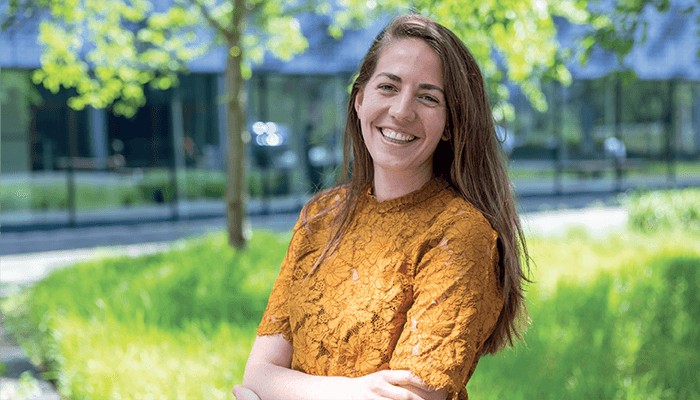The rigidity of academia
Communicating our science is vitally important – and how we communicate it is even more so. Currently, the scientific community often favors “traditional” approaches to communication – such as presentations and posters – and does not use the full potential of the tools unleashed by the digital revolution.
For academia to stay connected to the science performed in industry, we need to explore new methods of science communication – including infographics, videos, or even podcasts. Thankfully, conferences are now creating more and more room for this kind of communication through video contests, pitch competitions, or even open assignments in which candidates are free to share their science in their own way – the HPLC Separation Science Slam being a good example.

Unfortunately, few students actually commit to these assignments. Should we conclude from this that the new generation of scientists isn’t ready for change? I don’t think so – for multiple reasons. Early-career scientists are encouraged by their supervisors to present their work in posters or presentations and often have limited knowledge of the possibilities inherent in these new forms of communication. It also takes a considerable amount of time to prepare both a poster and a pitch or video, and supervisors may perceive this effort as “duplicated” or even “wasted.” Simply put, the current generation of students has not been encouraged to use new communication methods.
In my 10 years at university, I was never challenged to think outside the box when it came to communicating science within the field. Implementing new approaches to communication in undergraduate courses could stimulate creativity, which could lead to more scientific innovation down the line.
A shift in communication
In March 2020, we all experienced a seismic shift in science communication due to the COVID-19 pandemic. With the bulk of science communication migrating online, new methods suddenly became more accepted. Online platforms such as LinkedIn started to play a bigger role in connecting scientists with colleagues in the field. Fast forward to 2022 and we can still see the evidence of this sudden shift – and of researchers’ subsequent realization that new methods of communication desperately need a place in the scientific world.
Despite these positive outcomes, the COVID-19 pandemic also increased the public’s distrust in science – which could be attributed to (among other things) the communication from academia to the public. With minimal interaction, scientists are often perceived as living in an “ivory tower” and lacking humanity. Science needs to be fun. It needs to be engaging. And, most importantly, it needs to be accessible. If the public – especially its youngest members – are on Instagram, TikTok, or YouTube, then scientists also need to be on those platforms.
Unfortunately, I believe the way we communicate science to the public has also resulted in stereotyping. Many people picture scientists as old, white, and male. It reduces diversity in all layers, from aspiring students to full professors, because the “ideal” scientist is always portrayed in a certain way. The resulting feeling of “not belonging” may be one reason young people overlook science as a potential career path.
Furthermore, I believe current students are under the impression that science studies offer a poor career outlook. When I was a high school student, we used to say that with a bachelor’s in law or economics we could “still become anything” and not limit our future options. In retrospect, I could not agree less. Where is the logic in that? And why could you not still “be anything” if you were to pursue chemistry or physics? I truly believe there is a disconnect between what people think “science” is and its real-world impacts. By better communicating science and showing its influence on our society, students will hopefully become aware of the countless possibilities it offers.
Going forward
Because the world is not equally exposed to role models from all fields, we as scientists have a duty to spread our stories to the public. Communication is a crucial part of being a scientist and, in my opinion, we should enhance people’s skills in that arena at every level of their education.
During my PhD, I began looking for new ways to communicate my science. I discussed many of the problems described here with my dear colleagues Noor Abdulhussain and Lotte Schreuders. The outcome? We decided to create an Instagram channel about our life at university – Sisters in Science NL. Our slogan eventually became, “If you can see it, you can be it.”
One thing led to another. Since then, we have appeared on national television twice, on the radio once, performed in a theater show, and shared our story about finding a fast, fun, exciting, and creative way to communicate science in a variety of interviews and podcasts. With Sisters in Science, we hope to make an impact on three different levels. First, by making ourselves visible to the public, we hope to break the vicious cycle of scientist stereotyping. Second, we aim to show the current generation of students that they can become scientists, even if they don’t initially feel that they belong in the scientific world. Finally, we hope to show future generations that they too can be scientists. Academia is a privileged place – a locked door to which many feel they do not hold a key. With our initiative, we hope to remove these barriers.
When we started Sisters in Science, we were unsure of the scientific community’s reaction. However, in December 2021 we were granted the Diversity Initiative Award by the Dutch Research Council – a clear indication that what we are doing benefits science as a whole. Still not convinced? Think about this: a brilliant scientist may perform fantastic research, publish important papers, or even win a Nobel prize – but a brilliant science communicator may inspire thousands of children, motivate many early-career scientists, and generate an army of change-makers.




